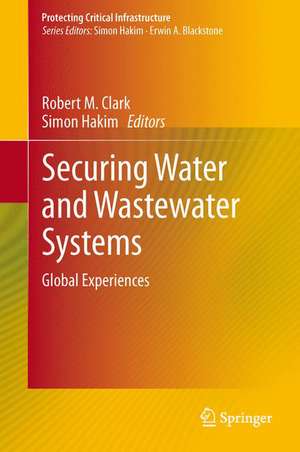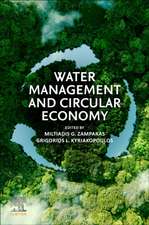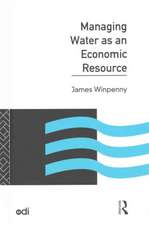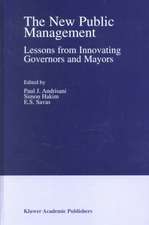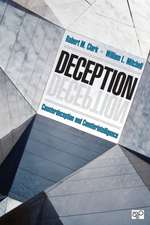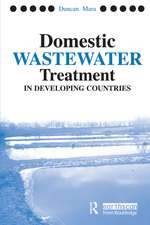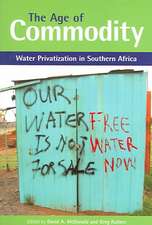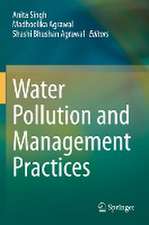Securing Water and Wastewater Systems: Global Experiences: Protecting Critical Infrastructure, cartea 2
Editat de Robert M. Clark, Simon Hakimen Limba Engleză Hardback – 15 oct 2013
| Toate formatele și edițiile | Preț | Express |
|---|---|---|
| Paperback (1) | 645.79 lei 43-57 zile | |
| Springer International Publishing – 23 aug 2016 | 645.79 lei 43-57 zile | |
| Hardback (1) | 650.69 lei 43-57 zile | |
| Springer International Publishing – 15 oct 2013 | 650.69 lei 43-57 zile |
Preț: 650.69 lei
Preț vechi: 765.51 lei
-15% Nou
Puncte Express: 976
Preț estimativ în valută:
124.55€ • 135.33$ • 104.69£
124.55€ • 135.33$ • 104.69£
Carte tipărită la comandă
Livrare economică 21 aprilie-05 mai
Preluare comenzi: 021 569.72.76
Specificații
ISBN-13: 9783319010915
ISBN-10: 3319010913
Pagini: 250
Ilustrații: VIII, 398 p. 114 illus., 93 illus. in color.
Dimensiuni: 155 x 235 x 30 mm
Greutate: 0.7 kg
Ediția:2014
Editura: Springer International Publishing
Colecția Springer
Seria Protecting Critical Infrastructure
Locul publicării:Cham, Switzerland
ISBN-10: 3319010913
Pagini: 250
Ilustrații: VIII, 398 p. 114 illus., 93 illus. in color.
Dimensiuni: 155 x 235 x 30 mm
Greutate: 0.7 kg
Ediția:2014
Editura: Springer International Publishing
Colecția Springer
Seria Protecting Critical Infrastructure
Locul publicării:Cham, Switzerland
Public țintă
ResearchCuprins
Direct Threats To Water and Wastewater Infrastructure.- Role of design basis threats in the development, design, and implementation of water security studies and improvement.- Industrial Control System (ICS) Cyber Security for Water and Waste Water Systems.- Implementing Machine Learning Algorithms for Water Quality Event Detection: Theory and Practice.- Sensor Placement Under Nodal Demand Uncertainty for Water Distribution Systems.- Waterborne Transport Modeling of Radioactivity from the Fukushima Nuclear Power Plant Incident.- Quantitatively assessing water asset reliability in the Netherlands : 15 Years of Experience.- Impact of water resource availability on growth and development.- Water Resource Planning in Peru.- Water scarcity in Asia and its long term water and border security implications for Australia.- Threats to water-related ecosystems.- Water Diversion Projects in China.- Impact of climate change on water security.- Feasibility of using satellite water tanks for protecting drinking water in urban communities in developing countries.- Integrated Total Water Management Systems.- Integrated control and detection of accidental occurrences in water distribution networks.- Plan, Prepare and Safeguard: Water Critical Infrastructure Protection in Australia.- Latvian Practices for Protecting Water and Wastewater Infrastructure.- Austrian activities in protecting critical water infrastructure.
Textul de pe ultima copertă
Urban water and wastewater systems have an inherent vulnerability to both manmade and natural threats and disasters including droughts, earthquakes and terrorist attacks. It is well established that natural disasters including major storms, such as hurricanes and flooding, can effect water supply security and integrity. Earthquakes and terrorist attacks have many characteristics in common because they are almost impossible to predict and can cause major devastation and confusion. Terrorism is also a major threat to water security and recent attention has turned to the potential that these attacks have for disrupting urban water supplies. There is a need to introduce the related concept of Integrated Water Resources Management which emphasizes linkages between land-use change and hydrological systems, between ecosystems and human health, and between political and scientific aspects of water management. An expanded water security agenda should include a conceptual focus on vulnerability, risk, and resilience; an emphasis on threats, shocks, and tipping points; and a related emphasis on adaptive management given limited predictability. Internationally, concerns about water have often taken a different focus and there is also a growing awareness, including in the US, that water security should include issues related to quantity, climate change, and biodiversity impacts, in addition to terrorism. This presents contributions from a group of internationally recognized experts that attempt to address the four areas listed above and includes suggestions as to how to deal with related problems. It also addresses the new and potentially growing issue of cyber attacks against water and waste water infrastructure including descriptions of actual attacks, making it of interest to scholars and policy-makers concerned with protecting the water supply.
Caracteristici
Investigates the direct threats to drinking water supply systems such as from natural or manmade threats Analyses threats from point- and non–point source pollution to water-related ecosystems, as increased water consumption resulting in the increased use of ecosystem services and biodiversity loss Investigates the impact of climate change resulting in increased hydrological variability including increased amplitude and frequency of droughts and floods ? Includes supplementary material: sn.pub/extras
